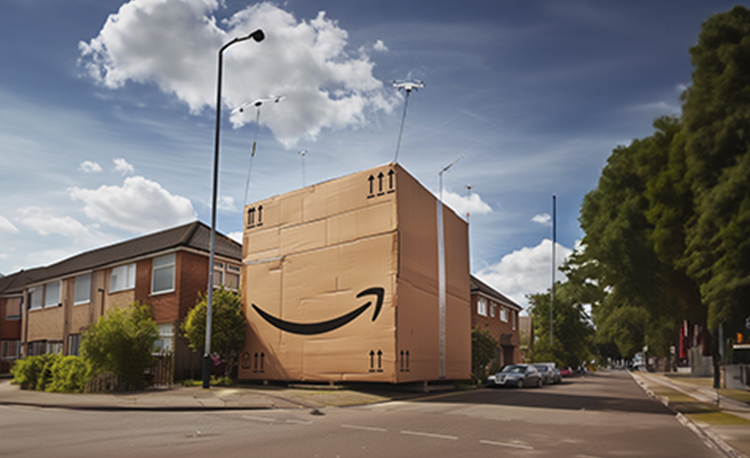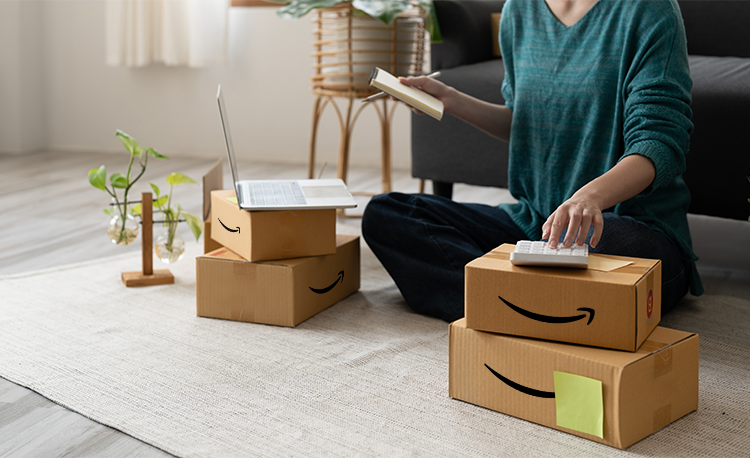What is the Marketplace model of eCommerce and how to leverage it for scale?
There is no denying the fact that marketplaces have been the biggest driving forces in…

In the fast-paced digital world, time is everything, especially when it comes to the performance of your eCommerce website. A delay of just a few seconds can make the difference between securing a new customer and losing them to a competitor. But why is website load time so critical, and how does it affect both user experience and conversion rates?
The impact of load time on conversion rates is well-documented, with numerous studies highlighting the importance of speed:
These statistics underscore the importance of optimizing your website’s load time to enhance user experience, improve SEO, and drive higher conversion rates.
In this blog, our digital commerce enablers have shared the profound impacts that load time has on various aspects of your website’s performance.
The first few seconds a user spends on your eRetail website are crucial. In those brief moments, your website must load swiftly, providing a seamless and engaging shopping experience. Why? Because users generally have a low tolerance for waiting.
Studies have shown that users expect a website to load within two to three seconds. If your website takes any longer, you risk losing potential customers as they abandon your site in search of a faster alternative. The digital age has shortened attention spans, and users are quick to judge your brand based on their initial experience.
Also, the saying "first impressions matter" holds truth online. A slow-loading website creates a negative first impression, leading users to perceive your site as unreliable or unprofessional. This can significantly reduce the likelihood that visitors will engage with your content, explore your offerings, or make a purchase. A fast, responsive website, on the other hand, immediately conveys professionalism and reliability, encouraging users to stay, explore, and ultimately convert.
Bounce rate, the percentage of users who leave your site after viewing only one page, is a key indicator of website performance. High bounce rates are often a direct consequence of slow load times. When users are forced to wait too long, they’re more likely to exit your site before even giving it a chance. This not only impacts your conversion rates but also signals to search engines that your site may not be providing a good user experience, further hurting your brand’s online visibility.
Load time isn’t just a user experience issue; it’s also a critical factor in search engine optimization (SEO). Google and other search engines consider page load time when ranking websites. A slower website can lead to lower search engine rankings, which in turn results in decreased organic traffic. Fewer visitors mean fewer opportunities for conversions.
Load time plays a significant role in your website’s SEO performance. Here’s how:
Search Engine Algorithms: Google and other search engines use page load time as a ranking factor. A faster website is more likely to rank higher in search results, leading to increased visibility and more organic traffic. This is particularly important as higher rankings translate directly into more potential conversions.
User Experience Metrics: Search engines track user behaviour, including bounce rates and dwell time. A high bounce rate can signal to search engines that a website isn’t providing a good user experience, which can negatively impact your SEO rankings. Fast load times help reduce bounce rates and increase dwell time, improving your overall SEO performance.
Mobile Friendliness: With Google’s mobile-first indexing, the mobile version of your website is critical for SEO. A fast-loading mobile site is more likely to rank well in search results, driving more traffic and conversions from mobile users.
Crawl Efficiency: Search engine bots crawl websites to index their content. A slow-loading website can hinder this process, reducing the number of pages that are indexed and updated. A faster site ensures that crawlers can efficiently index all relevant content, improving your SEO rankings.
Competitive Edge: In competitive markets, load time can be a decisive factor. If two websites have similar content and SEO strategies, the faster-loading site is more likely to rank higher and attract more users.
A fast website doesn’t just attract new visitors, it keeps them coming back. Satisfied users are more likely to return to a website that offers a fast, seamless experience. This retention is critical for long-term success, as returning visitors are more likely to convert, whether by making a purchase, signing up for a service, or engaging with your content. On the other hand, slow websites deter repeat visits, leading to lost opportunities and diminished brand loyalty.
For eCommerce websites, slow load times can be especially damaging. A delayed checkout process can lead to higher cart abandonment rates, as users become frustrated and leave before completing their purchase. This is a significant issue in the competitive eCommerce landscape, where every sale counts.
The checkout process is where the magic happens—or doesn’t. If your website slows down during this critical phase, users are likely to abandon their carts and take their business elsewhere. This not only results in lost sales but also increases the cost of customer acquisition, as you’ll need to invest more in marketing to bring those potential customers back.
Cart abandonment is a critical issue for eCommerce businesses, and slow load times during the checkout process are a major contributor. Here’s how it happens:
Slow Load Times During Checkout: When the checkout process is slow, users can become frustrated and leave the site. This is particularly true for mobile users, who may already be dealing with slower internet connections. A delayed payment page or a lagging order confirmation step can be all it takes to push a potential sale off the cliff.
Complex Checkout Process: A lengthy or complicated checkout process exacerbates the issue. Each additional step that takes time to load increases the likelihood of abandonment. Asking for the same information multiple times or requiring unnecessary details can further frustrate users, leading them to abandon their carts.
Unexpected Costs: Revealing additional costs like shipping fees late in the process can also lead to cart abandonment, especially if the load time gives users more opportunity to reconsider their purchase. The longer users have to wait, the more time they have to second-guess their decision.
Security Concerns: Slow-loading pages can create the impression that your website is not secure, especially during payment processing. Users might worry about the safety of their personal and financial information, leading them to abandon their purchase.
Speed as a Differentiator: In today’s competitive markets, where consumers have countless options at their fingertips, a faster website can be a crucial differentiator. Users are more likely to choose a site that offers a faster, smoother experience over a slower one, even if the slower site offers similar products or services. In this way, speed becomes not just a technical metric but a competitive advantage that can drive higher conversions.
Perceived Reliability and Trust: A fast-loading website isn’t just about convenience; it’s about trust. Users often perceive faster websites as more reliable and professional, which enhances the site’s credibility. This psychological impact is crucial, as trust is a key factor in converting visitors into customers. A site that loads quickly creates a positive perception, making users more likely to engage, share personal information, and complete transactions.
In today’s digital landscape, website load time is not just a technical issue; it’s a critical business factor that impacts user experience, SEO, and conversion rates. By focusing on improving load times, businesses can enhance user satisfaction, reduce bounce rates, improve search engine rankings, and ultimately drive higher conversions.
As the statistics show, even small improvements in load time can have a significant impact on your bottom line. Whether you’re an eCommerce giant like Amazon or a small business looking to increase your online presence, a Digital Commerce Partner can help you to optimize your website’s speed for the ultimate success. In a world where every second counts, ensuring your website loads quickly is one of the best investments you can make.
About GreenHonchos (GH) – GH is a leading Digital Commerce Enabler with an experience of more than a decade of scaling 200+ Global Retail Brands online. We integrate best-in-class global technologies, digital channels of commerce, and bespoke e-commerce strategies for brands to deliver a delightful consumer experience online and achieve high revenue growth. We are excited to extend our partnership to the most promising brands and help growth-focused retail brands in their digital transformation journey right from creating high-converting websites powered by composable commerce technology to crafting brand-native digital content that leads to conversion and retention as well as enabling omnichannel brand growth in the global eCommerce spectrum.


In the evolving world of modern retail, success isn’t just...


In today’s global eCommerce ecosystem, marketplaces have b...


In the fast-paced digital world, time is everything, especia...


As Henry Ford wisely said, “The only real mistake is the ...


For many years, July was often considered a slow month for r...


With the overall increase in global retail sales figures, th...


In the...


In the...


The Indian eCommerce industry is transforming at a faster pa...


It’s been a while since Meta introduced its contender to T...


Marketing your brand at Amazon can exponentially boost your ...


The pandemic has brought about a lot of changes and ada...


There is no denying the fact that marketplaces have bee...


The post-pandemic world has made brands realise the importan...


We are living in a digital age where every brand is coming a...


Digital media accounted for 64.4% of global ad sp...


Marketers since generations have banked heavily on the ...


Social Media has grown rapidly in the past couple of years. ...


The first step towards building a successful business i...

Want to take your eCommerce business to the next level? We help businesses make the most at every stage - from product conceptualization to achieving the maximum optimization & ROI on business operations.
B-24, Sector 3, Noida, GB Nagar,
Uttar Pradesh 201301, India
Mazaya Business Avenue, Tower AA1,
FZCO, Office #18, 36th floor, JLT, Dubai, UAE
1st Floor, Plot-183, Indiranagar Stage 2,
Bengaluru, Karnataka,
560038, India